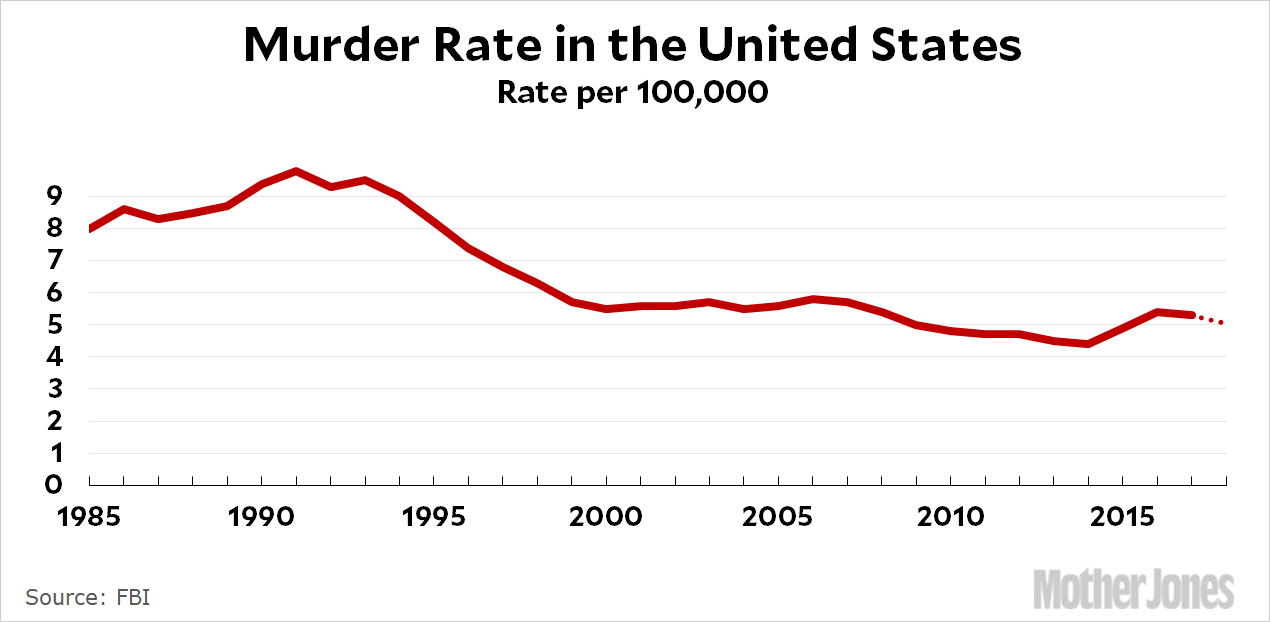Jeff Asher of the New York Times takes a look at 2018 murder rates in big cities and extrapolates a likely decline of about 5 percent nationwide. If that pans out, the US murder rate will look like this:

So murder rates rose for two years (2015 and 2016) and have now declined for two years (2017 and 2018). The initial increase was quite large, and still unexplained as far as I know. However, if I had to guess, I’d say it was most likely drug related: murder rates increased as the opioid crisis finally got out of control, and the decline starting last year is a sign that perhaps the opioid crisis has peaked and is now starting to fade. This would be consistent with previous episodes of drug use, which have always been episodic and faddish, with a lifetime of around ten years or so (heroin —> crack —> marijuana —> meth —> opioids).
My prediction: murder rates will continue to decrease as the opioid epidemic finally burns out and will then plateau at around 4.0. Stay tuned.


















